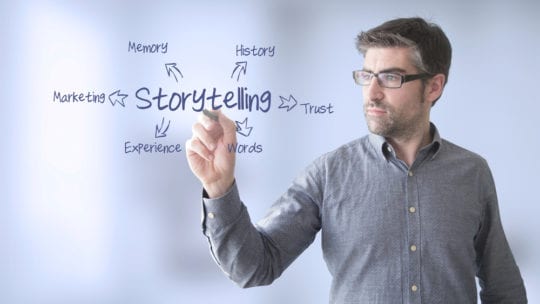
Creating and telling a story that makes a difference is hard work!
The story must be centered on a simple and strategic model. This allows storytelling to be not only scalable, but also achievable, regardless of location or budget.
This became abundantly clear during work with the U.S. State Department's U.S. Marketing College. Started in 2008, it offers diplomats a week-long program in PR.
The PR pros teaching there faced a fundamental and intriguing challenge. 'Students' at the College are unique. They work throughout State and in other parts of the government. As such, part of their job is to share the U.S. narrative or help others do so. That part is straightforward.
But their skills are off the charts. Many speak five languages. Often they have lived in places that are not exactly vacation destinations. They deal with issues that we read about in the paper and online. These patriots care deeply about improving or safeguarding our world. They also usually are missing classic training in communications and marketing.
A Simple Storytelling Model
This and other factors led to the creation of a simple model. The point of it is to help anyone anywhere create and tell an effective story. It is known as the ABCDE Model.
Below are its basics:
A is for Audience: We want to know whom we are trying to persuade (using demographics, behavior, attitudes, psychographics and more to define our audience).
Based on research and analysis, what do we know about our target audience? And how will that be helpful in creating a persuasive communication campaign?
B is for Behavioral Objectives: What do we want our target audience to do based on this campaign?
C is for Content: What is the benefit we receive? What are we promising our target audience will receive in return for the behavior we are advocating? What’s in it for them?
Then, what is the reason to believe? Why should our target audience trust we can deliver the benefit we are promising (e.g. endorsement, mechanism of action, ingredients, product/service attributes)?
Last, what tone/character do we need? What is the personality, attitude and look/feel of our message (expressed in three words or fewer)?
D is for Delivery:We determine what media we will use. Which online and offline media channels are we using to get out our message? For example, Facebook ads, YouTube, print ads, TV commercials and more.)
Next, what’s the message we are delivering? Is it on brand? Does this communication campaign tie into and leverage our brand image? Is it recognizable? This prompts us to ask: Will the campaign make it easy for our target audience to quickly identify it with our brand?
Is it simple? Is our message clear and simple enough that the target audience will be able to understand it quickly and easily? Will it grab the target audience's attention?
E is for Evaluation: What metrics are we going to use to evaluate the success of this communication campaign? Over what time period?
'Oh, I Already Do That,' But Do You? Really?
Our group of PR pro professors realized in designing this model is that, like any simple framework, everyone initially thinks, “Oh, I already do that.”
In reality, we find that it is way too rare that we follow all five components with discipline. In fact, the “A” and “B” steps often are glossed over in our excitement to get to “C.”
Remember when our parents told us to eat our vegetables before we could have dessert? They were right. Make sure you finish “A” and “B” before you start creating the next campaign.
Another tip: print this model every time you create a story or campaign. It’s worth the effort.
Bob Pearson is strategic advisor at W2O Group
Editor's Note: This ideas in this article are based on the book, “Crafting Persuasion,” by Kip Knight, Ed Tazzia and Bob Pearson.]
NOTE: A version of this content appeared originally in PRNEWS, July 2019. For subscription information, please visit: https://www.prnewsonline.com/subscribe-now/
CONTACT: [email protected]
